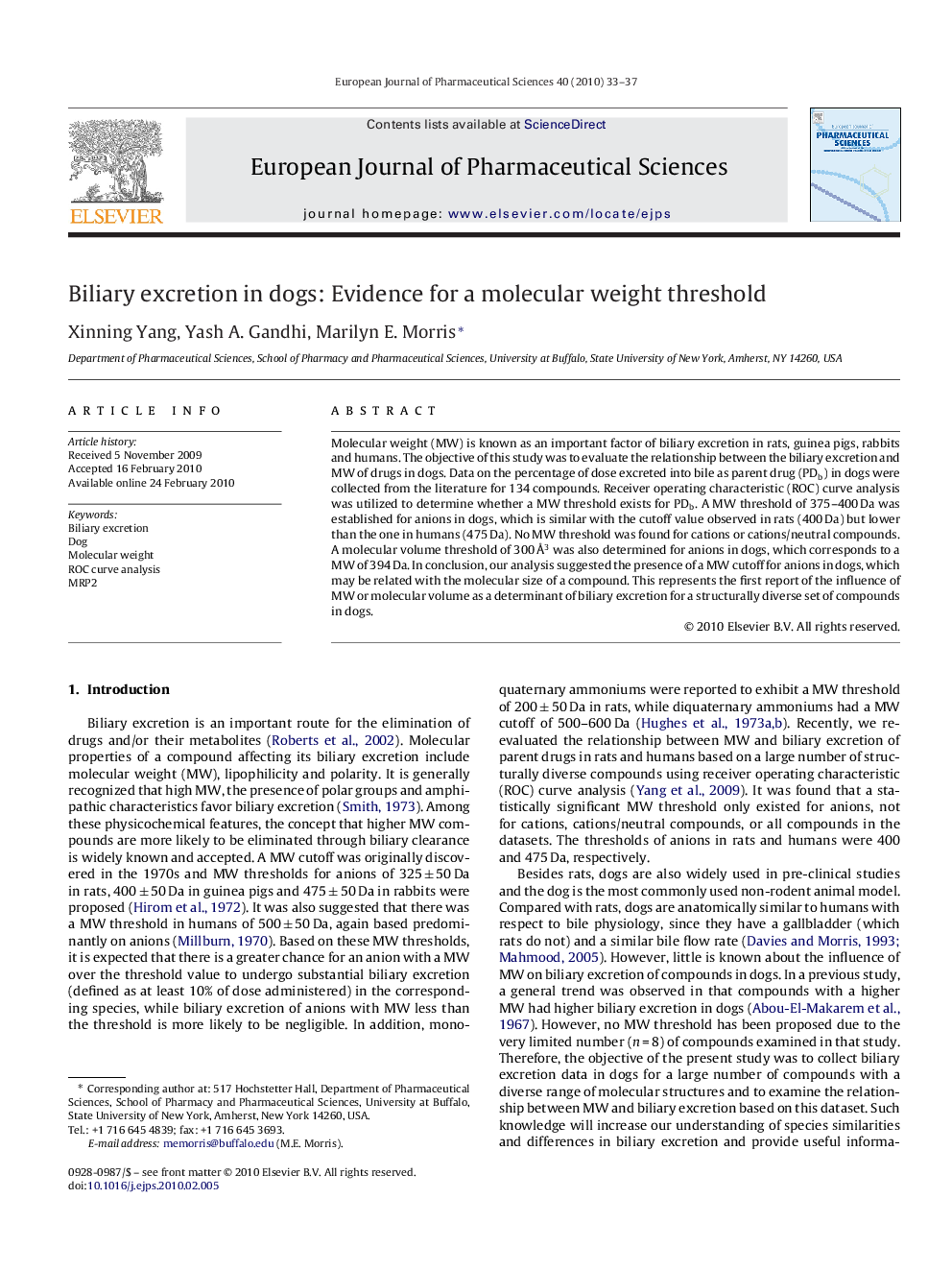| Article ID | Journal | Published Year | Pages | File Type |
|---|---|---|---|---|
| 2481535 | European Journal of Pharmaceutical Sciences | 2010 | 5 Pages |
Molecular weight (MW) is known as an important factor of biliary excretion in rats, guinea pigs, rabbits and humans. The objective of this study was to evaluate the relationship between the biliary excretion and MW of drugs in dogs. Data on the percentage of dose excreted into bile as parent drug (PDb) in dogs were collected from the literature for 134 compounds. Receiver operating characteristic (ROC) curve analysis was utilized to determine whether a MW threshold exists for PDb. A MW threshold of 375–400 Da was established for anions in dogs, which is similar with the cutoff value observed in rats (400 Da) but lower than the one in humans (475 Da). No MW threshold was found for cations or cations/neutral compounds. A molecular volume threshold of 300 Å3 was also determined for anions in dogs, which corresponds to a MW of 394 Da. In conclusion, our analysis suggested the presence of a MW cutoff for anions in dogs, which may be related with the molecular size of a compound. This represents the first report of the influence of MW or molecular volume as a determinant of biliary excretion for a structurally diverse set of compounds in dogs.
